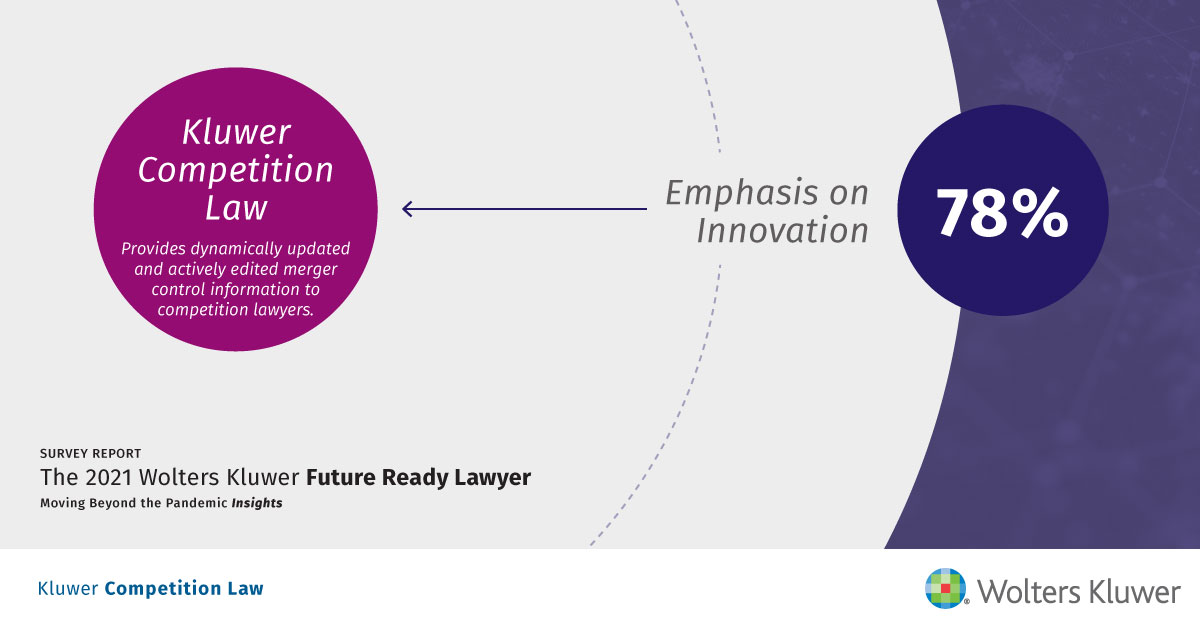Illumina/Grail – What is the solution for Killer Acquisitions?
Introduction
Following the CJEU Illumina/Grail ruling the case here is made for the Commission to negotiate with the national competition authorities (NCAs) to adopt a common approach to dealing with so-called ‘killer acquisitions’ both substantively and procedurally. The idea is that the NCAs and the Commission would negotiate a network notice that would outline a transparent and common approach on which national authorities and businesses alike could rely. This Notice would rely on the CJEU’s observation that any application to the first subparagraph of Article 22, paragraph 1 EUMR must adhere to the principles of predictability and legal certainty. Such a notice would permit NCAs to review and refer killer acquisitions with confidence, while providing undertakings with a predictable and transparent regime upon which they could rely.
The dramatic September 3rd judgment of the Court of Justice of the European Union in Illumina/Grail set off a cascade of case notes and opinions related to the case. The judgment has clearly had a significant effect. The CJEU’s ruling had the immediate effect of reversing the decision of EU General Court, which was being appealed. The expansive interpretation of Article 22(1) EUMR’s first subparagraph is dead. The expansive interpretation of the first subparagraph in Article 22(1), which allowed the National Competition Authorities to refer cases to European Commissions where they lacked jurisdiction to investigate or rule on such cases, is no longer valid and cannot be relied upon. The CJEU’s ruling led to the withdrawal of the referral requests made by seven NCAs in relation to Microsoft/Inflection. It is possible, though inevitably difficult given the Union’s case law on the subject, for Illumina to ultimately obtain damages.
Consequences for Future Killer Acquisitions
After the dust settles the question remains what exactly is the Commission going to do about so-called ‘killer acquisitions’? DG Competition, which accepts that such acquisitions pose a serious threat to Europe’s main competition agency, cannot simply walk away from Illumina/Grail. In her statement following the verdict, outgoing Competition commissioner Vestager acknowledged that killer acquisitions are a threat to the European Market and must be addressed. Three options would seem to be under discussion. The first option would be to amend EUMR itself. In light of the Towercast ruling, the second option would be to use Article 102 TFEU in place of any merger regime. Third, NCAs with legislative authority could refer smaller transactions to Commission. It is clear that where national law gives jurisdiction to NCAs, the CJEU ruling on Illumina/Grail will not apply. This solution is more complicated than it appears. The Commission is understandably concerned that, in the age of the Draghi Report, an opening up of legislative text for the merger regulation may have untoward effects. These could include a legislative move for instance to make any new regulation more favourable to the establishment of ‘European champions’ or tilting the merger regime away from a core competition-based analysis.
There are also a number of other practical concerns around any potential legislative amendment. This would include the issue of how to create a predictable, effective and transparent legislative text. In its ruling, the CJEU stated that there is a strong demand for predictability, legal certainty, and transparency in any proposed EU merger regime. It is worth reading Advocate General Emiliou’s Opinion
to see his detailed discussion on the problems with the Commission’s existing guidance regarding Article 22(1) referrals, which lacks predictability and transparency. These issues will not disappear by enacting legislation instead of a Commission guidance document.
Unresolved Issues
For example, there is the possibility that 30 or more NCAs could call in acquisitions. Many of these are likely to be smaller and some, like GRAIL, have not yet been placed on the market. How will notice periods work in transactions involving small, often unknown entities or entities that have not yet entered the market? Will there be a statute of limitation to provide legal certainty for business? Will there be a strong assumption that a deal closed within six months is unlikely to be reopened again? This would be accompanied by a simple notification form that all entities could submit in advance of a deal, to reinforce this presumption. Who would run the clearinghouse? DG Competition, ECN or individual NCAs Will there be an all-encompassing call in power? Will the referral powers be ‘hybrid’ providing a call-in power along with a deal value threshold as well? Will the referral powers provide a call-in power as well as a deal value threshold? The legislation would have to address a number of issues, such as which acquisitions should be left to the NCAs to review and which should be reviewed by Brussels. Other questions would have to be addressed as dealing with the question of nexus of any acquisition with national and Union jurisdiction.
When one begins to consider all the difficulties of drafting legislation one may begin to wonder whether this is the place to start to deal with the EU’s killer acquisition problem.
The Towercast Option
The second option is to consider the Towercast option. The CJEU raised this option in its judgment, whereby the NCAs can apply Article 102 TFEU to merger cases below EUMR levels following its recent ruling on Towercast
. This option does have some limitations. Towercast is unsure whether the Commission can apply Article 102 TFEU in merger cases that are below the EUMR thresholds. Even if the Commission is able to apply Article 102 TFEU, it can only do so in cases where an undertaking has already achieved dominance. In addition, competition agencies are only allowed to act ex-post and not ex-ante with respect to Article 102 TFEU. Accepting the status quo
The third alternative is to accept the post-Grail/Illumina world and to take jurisdiction over ‘killer deals’ wherever they can be found. This was the initial response of Commissioner Vestager in her post-judgment remarks. NCAs that have jurisdiction can still make referrals. This involves relying upon NCAs that have provided call-in powers for deals below the national thresholds, or enacted measures such as deal thresholds to be willing to exercise these powers. Four member states, Cyprus, Ireland and Romania, now have call-in powers. Five Member States – Hungary, Slovenia, Italy, Sweden and Latvia – have hybrid call in jurisdictional powers, while two states – Germany and Austria – have thresholds based on deal value. The Dutch and French authorities are also considering measures to be able to review deals below national thresholds and thereby be able to refer via Article 22(1) appropriate cases to the Commission.
While relying on NCAs who have jurisdiction to make referrals this does not really provide a comprehensive predictable and transparent solution. It’s not comprehensive. Not all NCAs appear to have jurisdiction, or are willing to expand their jurisdictional thresholds. Even if all NCAs had such powers and were willing use them, we would still have the same questions about predictability and legal certainty as raised by the CJEU and discussed above. This would require a significant diversion of administrative and business resources to file and manage such notifications. This would again involve a significant diversion of administrative and business resources to file and manage such notifications.
NCA Network Notice as a Way ForwardOne way forward would be for the NCAs and the Commission to agree on an NCA network notice which would seek to set out the terms under which Article 22(1) EUMR will be applied to ‘killer acquisitions’. NCAs and Commission can already use approximately 100 cases that were reviewed by authorities prior to the September CJEU Illumina/Grail decision as case law for developing a notice. This notice would be based on the CJEU’s directive that the operation under Article 22(1) must provide predictability, legal clarity and transparency for all parties subject to any referral regime. This threshold would provide predictability and transparency to all parties. As mentioned above, the majority of NCAs that can make referrals possess hybrid powers. Both deal value and call-in powers. In the spirit of the CJEU’s injunction, a network could limit the call-in powers to markets with heightened concerns over the impact on innovation. In the tech and pharmaceutical sectors, for example. In those sectors, the network notice could in a spirit of predictability, transparency and legal certainty seek to indicate the criteria under which call in powers would be likely to be exercised.
The notice would also seek to provide critical guidance for all parties. It would define the key thresholds and common substantive criteria. In addition, procedurally it would provide common time limits and notice periods, provide a long stop limitation period and provide for a common notification procedure.
Such a network notice would not provide an absolutely perfect solution. It would provide a much better predictability, legal clarity and transparency than a jurisdictional free for all. NCAs will operate their referral regimes in accordance with a common rulebook. In addition, the experience gained by all parties in operating a Network Notice would give the Commission and NCAs confidence over time to propose a “referral regulation” to further enhance due processes and legal security. A referral regulation like this would not amend the EUMR directly. It would instead operate in parallel to the EUMR and support the fundamental objectives of European Merger Review without opening up the current regulation.





